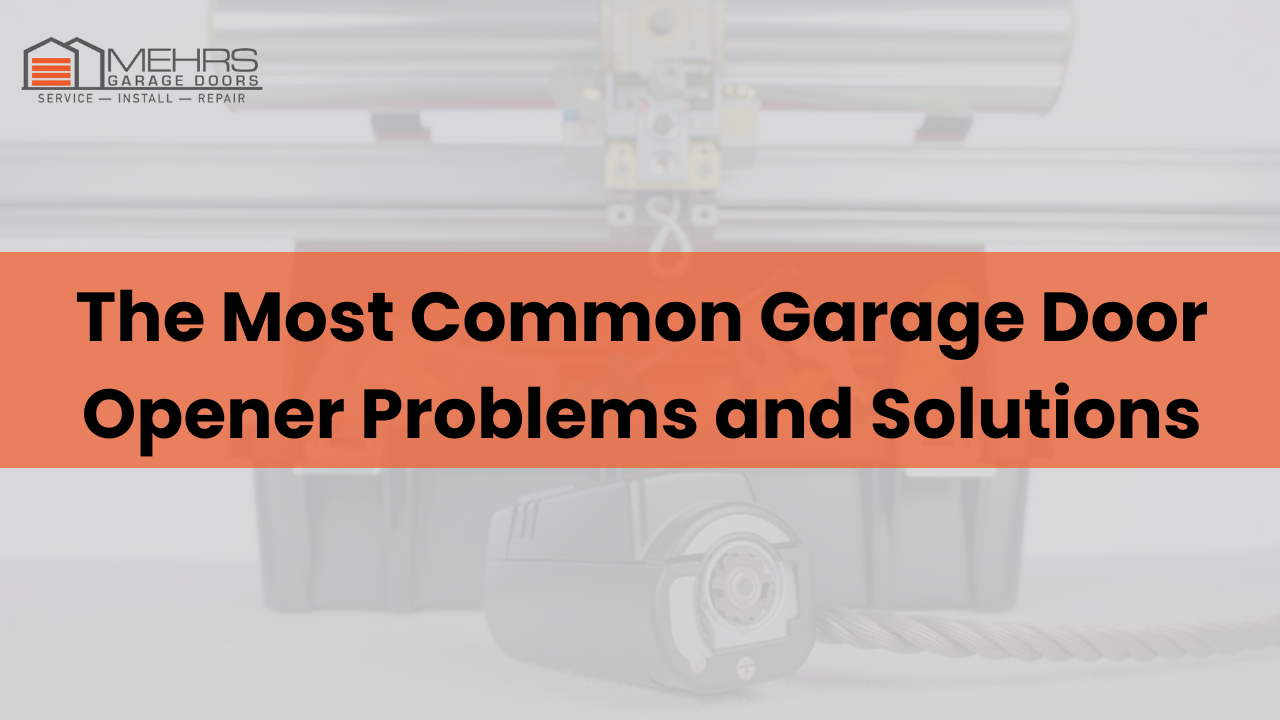
Common garage door opener issues include remote control failures, which often stem from weak batteries or range problems. To fix this, replace batteries and check for frequency interference. Wall switch malfunctions can result from loose wiring or power supply issues; confirm connections are tight and check breakers. If the door won’t open, inspect for obstructions, verify power, and check the torsion springs. Reversing doors typically have misaligned safety sensors or track issues. Noise usually signals a need for lubrication or track alignment. Flashing lights suggest wiring or sensor misalignment. Persistent operation problems may require a deeper look into your system.
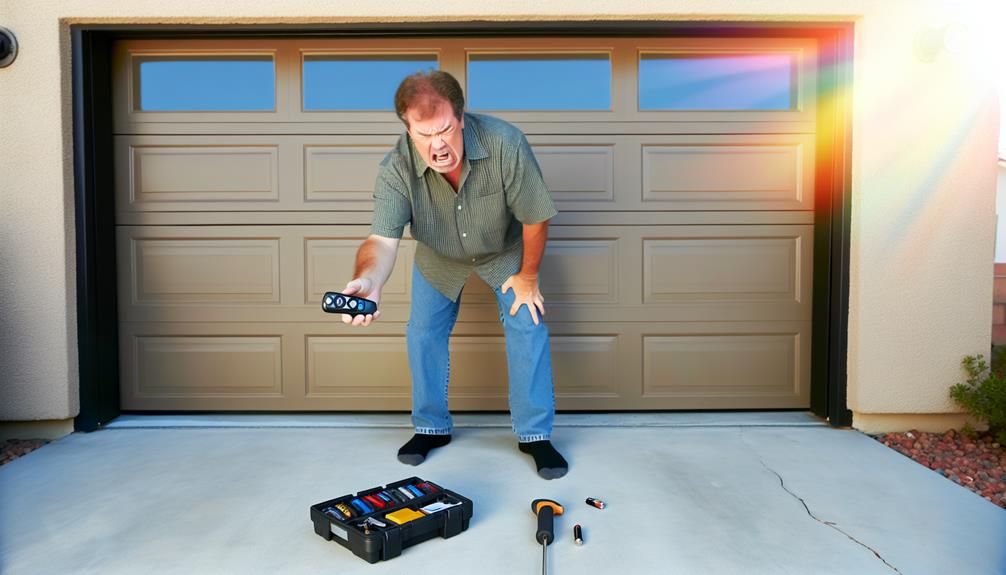
Encountering issues with your garage door remote control can be frustrating, especially when you’re in a hurry. The first step is to check the batteries. Remote controls often fail due to dead or weak batteries. Replace them with fresh ones and see if that resolves the issue.
Next, verify you’re within the remote’s range. Most garage door remotes have a limited range, so standing too far away can prevent the signal from reaching the opener. Try moving closer to the door and press the button again.
If the problem persists, inspect the remote’s antenna on the motor unit. A bent or damaged antenna can disrupt the signal. Straighten it out or replace it if necessary.
Also, verify the antenna isn’t obstructed by any metal objects, which can interfere with the signal.
Another potential issue is frequency interference. Nearby electronic devices or other remotes operating on a similar frequency can cause interference. Try reprogramming your remote control according to the manufacturer’s instructions.
If none of these solutions work, the remote itself might be faulty. In that case, consider purchasing a new remote or contacting a professional technician for further diagnosis.
While remote control issues are common, wall switch malfunctions can also disrupt the operation of your garage door opener. First, verify the wall switch is receiving power. Check for any tripped circuit breakers or blown fuses.
If the circuit is intact, the issue might lie in a faulty switch or wiring. To diagnose the problem, remove the wall switch cover and inspect the wiring connections. Loose or frayed wires can prevent proper functioning. Secure any loose connections and replace damaged wires.
If the wiring looks fine, test the switch itself. Use a multimeter to check for continuity. If the switch fails the continuity test, it needs replacement.
Additionally, inspect the garage door opener’s control board. A defective control board can render the wall switch ineffective. Look for burnt or damaged components on the board. If you find any, the control board may need replacing.
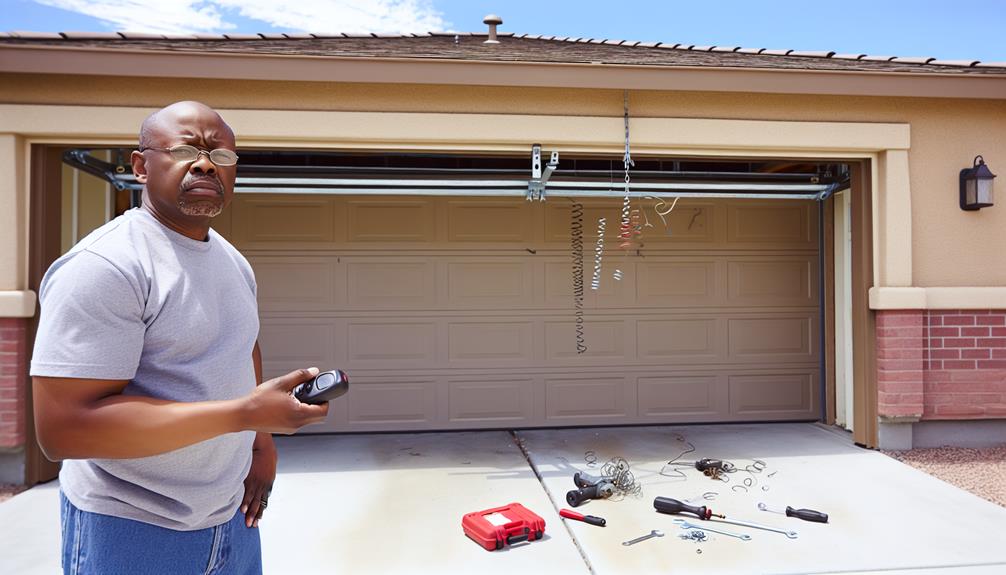
A garage door that won’t open can be a major inconvenience, affecting your daily routine and home security. To troubleshoot, start by checking the remote control batteries. If they’re dead, replace them and try again.
Next, verify the garage door opener is plugged in and the circuit breaker hasn’t tripped. If it has, reset it.
Inspect the garage door tracks for obstructions. Debris or damage can prevent the door from moving. Clear any blockages and verify the tracks are aligned. Lubricate the rollers and hinges to facilitate smooth operation.
Examine the torsion springs. If one is broken, the door won’t lift. Torsion springs are under high tension; consult a professional for replacement.
Also, check the cables for fraying or damage as they assist the springs in lifting the door.
Test the wall switch to see if it overrides the remote. If it works, your remote might need reprogramming. Refer to your garage door opener’s manual for instructions.
When your garage door reverses before closing, it can be frustrating and potentially hazardous. This issue often arises from misaligned or obstructed safety sensors. Start by inspecting the sensors located near the bottom of the garage door tracks. Verify they’re facing each other directly and free from any dirt or debris. A simple cleaning with a soft cloth can often resolve the problem.
Next, check for any obstructions in the door’s path. Objects, even small ones, can trigger the safety mechanism and cause the door to reverse.
Also, examine the door’s tracks for any dents, bends, or obstructions that may impede smooth operation.
If the sensors and tracks are clear, the issue might lie in the sensitivity settings of your opener. Most garage door openers have a sensitivity adjustment dial. Refer to your owner’s manual for the exact location and instructions. Adjust the sensitivity slightly, and then test the door’s operation.
Lastly, inspect the wiring connections between the sensors and the opener. Loose or damaged wires can cause intermittent issues, leading to the door reversing.
Secure any loose connections, and replace damaged wires if necessary. Addressing these factors should help resolve the problem efficiently.
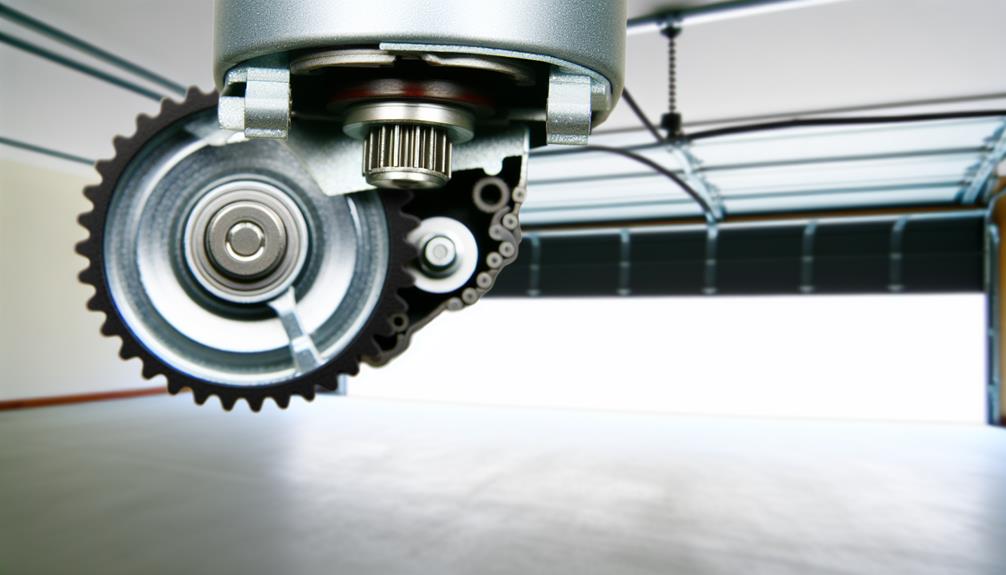
If your garage door opener‘s motor runs but the door doesn’t move, the problem likely lies within the drive system.
First, check the drive belt or chain. Over time, these can become loose or even break. Examine the belt or chain for any visible damage or slack. If it’s loose, tighten it according to the manufacturer’s instructions. If it’s broken, it will need to be replaced.
Next, inspect the trolley carriage. This component connects the opener to the door and can wear out over time. Disconnect the opener and manually move the door. If the door moves easily, the issue is likely with the trolley carriage or the drive gear.
Check the drive gear, typically found inside the motor unit. It may have worn out or stripped teeth, preventing it from engaging properly with the chain or belt. If you see any damage, replace the drive gear.
Also, verify that the emergency release isn’t engaged. This mechanism disconnects the door from the opener for manual operation. Confirm it’s in the correct position for automatic lifting.
Many homeowners find their garage door opener becoming increasingly noisy over time, which can be both annoying and a sign of underlying issues. To address this problem, start by inspecting the moving parts. A well-lubricated system reduces noise, so apply a high-quality lubricant to the rollers, tracks, and hinges. Be sure to use a product specifically designed for garage doors to guarantee peak performance.
Next, check the alignment of the tracks. Misaligned tracks can cause grinding and squeaking sounds. Use a level to verify they’re perfectly vertical. If you notice any bends or gaps, gently adjust them back into place or replace damaged sections.
The opener’s motor and drive system can also contribute to noise. Chain-driven openers tend to be noisier than belt-driven models. If you have a chain drive, verify the chain is properly tensioned and lubricated.
For belt drives, inspect the belt for wear and tear and replace it if necessary.
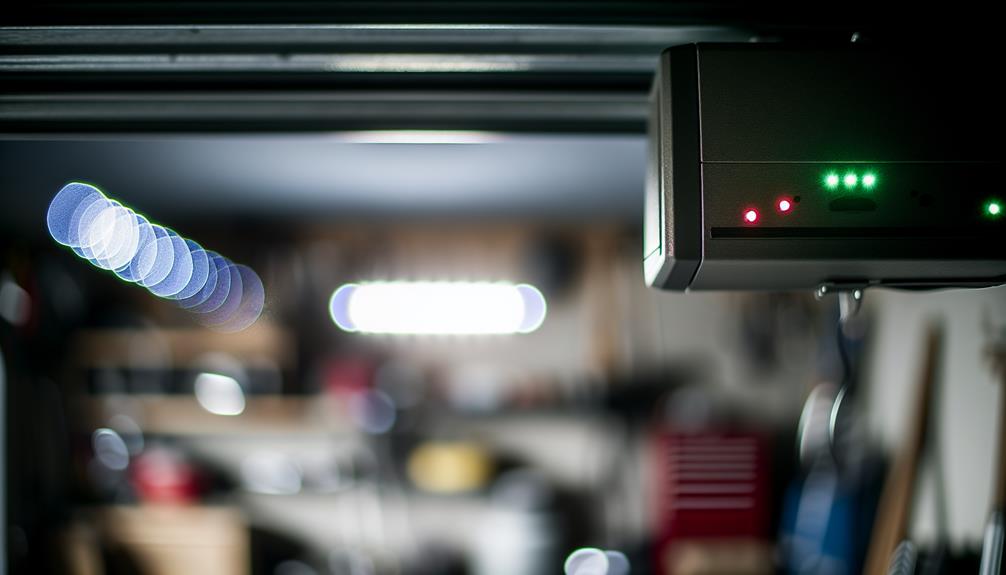
A flashing garage door opener light often signals an issue that needs attention. First, check the safety sensors. These sensors are located near the bottom of the door track and guarantee the door doesn’t close if something’s in the way. If their alignment is off or if something obstructs their path, the opener light will flash. Align the sensors by loosening the screws holding them in place, adjusting until both sensor LEDs are solid, then retightening the screws.
Next, examine the opener’s wiring. Loose or damaged wires can cause intermittent connections, resulting in the light flashing. Inspect the wires for any wear or breaks, and guarantee all connections are secure. Replace any damaged wires to restore proper function.
Additionally, consider the opener’s logic board. A malfunctioning logic board could be the culprit if the sensors and wiring are in good condition. Unplug the opener, wait for a minute, and then plug it back in to reset the logic board. If the problem persists, you may need to replace the board.
Once you’ve verified the sensors, wiring, and logic board are functioning correctly, you might still encounter intermittent operation of your garage door opener. This issue often stems from signal interference or weak remote batteries.
To begin with, confirm your remote control has fresh batteries. Weak batteries can cause sporadic signal transmission, leading to unreliable door operation.
Next, inspect the antenna on the garage door opener unit. Make sure it’s hanging downward and is unobstructed. Signal interference can be another culprit. Devices like cordless phones, Wi-Fi routers, or even microwave ovens can disrupt the signal between your remote and the opener.
Try relocating these devices to minimize interference.
If the problem persists, check the wall switch. Loose or frayed wires can cause intermittent functionality. Tighten any loose connections and replace damaged wires.
Additionally, consider reprogramming your remote controls and keypads to eliminate any potential software glitches.
Lastly, inspect the internal components for wear and tear. A worn-out motor or gears can also lead to inconsistent operation.
If you’ve tried all these solutions and the issue continues, it may be time to consult a professional technician for a thorough inspection and repair.
To reset your garage door opener system, locate the ‘Learn’ or ‘Home’ button on the motor unit. Press and hold it until the LED light turns off. Release, then press again until the light blinks.
Think of your garage door opener as the heart of your system. Regularly lubricate moving parts, check and tighten hardware, test the balance, and inspect safety sensors. These steps guarantee smooth operation and prevent future issues.
Yes, your garage door opener’s safety sensors can affect its operation. If they’re misaligned, obstructed, or dirty, the door won’t close properly. Regularly check and clean the sensors to verify they’re correctly aligned for ideal performance.
Reprogramming your garage door opener keypad is as easy as pie. First, locate the “learn” button on your opener. Press it, then enter your desired code on the keypad. Finish by pressing the “enter” button to save.
If your garage door opener is outdated, assess its compatibility with modern safety standards. Replace it with a newer model featuring enhanced security and reliability. Consult the manual or a professional to guarantee proper installation and configuration.
In dealing with garage door opener issues, you’re not alone—over 70% of homeowners experience at least one problem annually. By understanding the common problems like remote control malfunctions or a noisy opener, you can address these issues efficiently. Always check the basics first, like batteries and sensor alignment. Remember, regular maintenance can prevent many of these headaches. Keep this guide handy, and you’ll be well-prepared to tackle any garage door opener challenge that comes your way.
Copyright © 2025 Mehrs Garage Doors. All Rights Reserved.
Web Development By The Active Media.